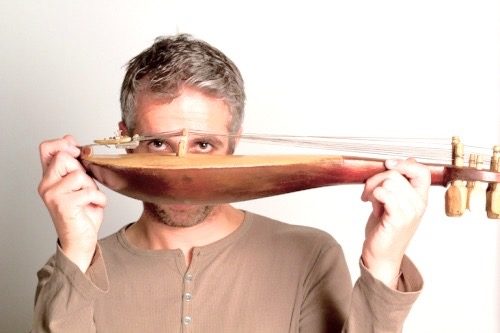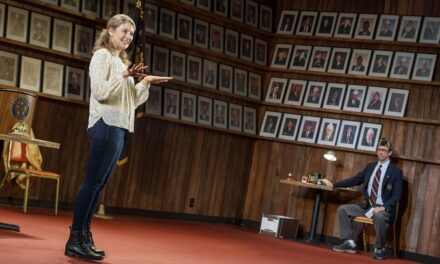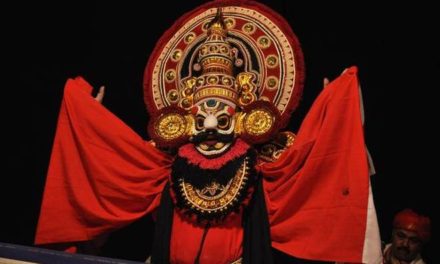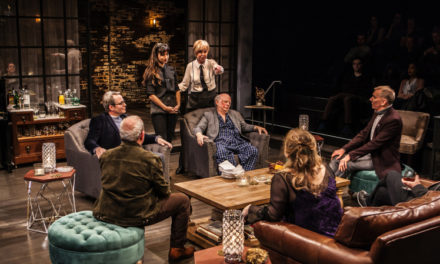The gadulka’s role in a Bulgarian folk orchestra might be compared the viola’s in a Western classical orchestra. Like the viola, it has bowed strings. Like the viola, it supports the other instruments, providing a sort of musical backbone, but doesn’t quite work as a solo instrument. And, like violists, gadulka players find themselves the butt of all the orchestral jokes, according to Rayko Baychev, author of The Burning Gadulka.
Performed solo by Miroslav Kokenov at the Bulgarian Cultural Institute, The Burning Gadulka sees one musician telling the story of his tumultuous relationship with his instrument – a relationship he describes as a “mixture of sorrow, hatred and masochistic fondness.” In so doing, he gradually builds up a picture of life in his unnamed Bulgarian town, where tradition is fighting a losing battle against modernization. These days, it pays to be a “gentleman who inspires trust, with an expensive watch and an eminently furrowed brow,” but being a folk musician doesn’t quite cut the mustard.
On one level, the hour-long monologue is a eulogy to Balkan folk culture, mourning its erosion in today’s world: “people have a rather foggy idea of the gadulka,” the unnamed musician muses, “They’ve got similar ideas about words like plough, sheaf, and thresher – that is, something of rural origin, but they’re not quite sure what.” His solo presence on stage takes on a new poignancy as he describes how, one by one, all the musicians in the local folk orchestra left, stripping it down to a skeleton of its former self.
On another level, The Burning Gadulka is also a universal story of human vulnerability, as the musician grapples with his own insecurities – primarily his status among other musicians and his successes with women. It seems that – funnily enough – the gadulka doesn’t boast the same sex appeal as the guitar or the piano.
Kokenov himself has a charisma and explosive charm that allows him to carry off a one-man show as effortlessly as if it had a full cast of actors. He slips in and out of various characters, from his main persona as the awkward and self-effacing gadulka player, to Ivan the lumbering and slow-witted pianist (a tupan being a Bulgarian drum), to the strict, shrill conductor of the orchestra. His mastery in physical humor is what carries the show – even if his performance is, at times, a little hammed up.
The performance takes a turn for the bizarre in its epilogue, as the musician takes the audience on a flight of fancy involving himself, a young and attractive female street campaigner, and a family of adopted pandas. It’s amusing, but it doesn’t quite gel with the rest of the piece, which focuses on every day and the realistic – albeit exaggerated for humorous effect.
All in all, though, The Burning Gadulka’s portrayal of the struggle facing all proponents of folk culture in an increasingly globalized society is variously touching, sad and deeply comical.
This article originally appeared in Central and Eastern European London Review on March, 10th 2016, and has been reposted with permission.
This post was written by the author in their personal capacity.The opinions expressed in this article are the author’s own and do not reflect the view of The Theatre Times, their staff or collaborators.
This post was written by Judith Fagelson.
The views expressed here belong to the author and do not necessarily reflect our views and opinions.


















